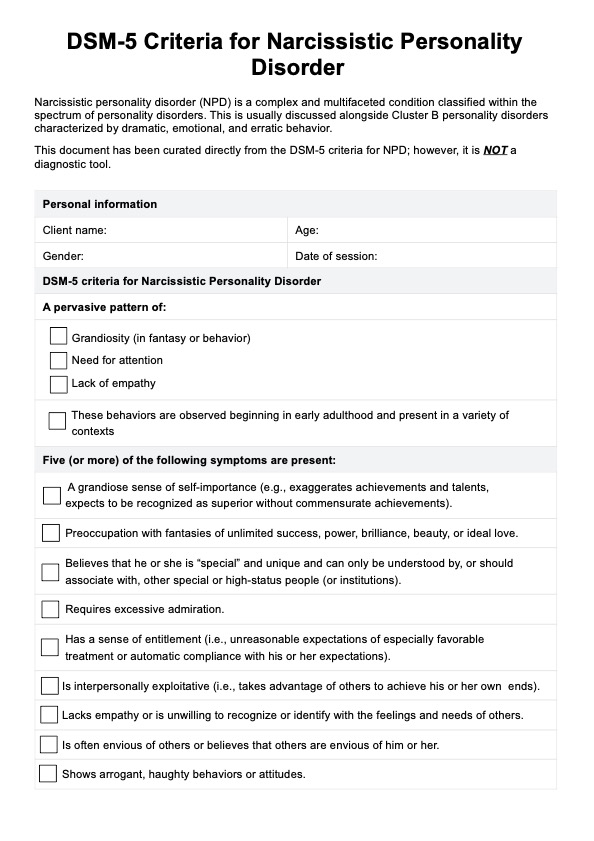Treatment for narcissistic personality disorders with a qualified therapist can help them develop empathy and improve their relationships but change often depends on the individual and requires significant effort.

DSM 5 Criteria for Narcissistic Personality Disorder
Access a helpful tool to help screen for symptoms and representations of Narcissistic Personality Disorder using our DSM-5 criteria checklist.
Use Template
DSM 5 Criteria for Narcissistic Personality Disorder Template
Commonly asked questions
Setting boundaries, limiting contact if necessary, and prioritizing your own well-being are crucial when dealing with a narcissist.
No. While narcissism can be a trait anyone might exhibit to some degree, NPD is a diagnosable mental health disorder that significantly impacts an individual's life.
EHR and practice management software
Get started for free
*No credit card required
Free
$0/usd
Unlimited clients
Telehealth
1GB of storage
Client portal text
Automated billing and online payments











